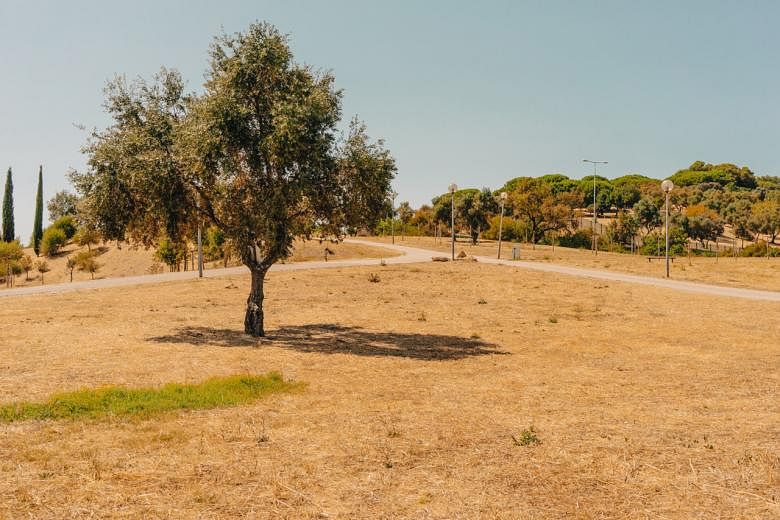LISBON - The image we have come to associate with the quality of what is green in the city may be all wrong.
Lush, green lawns come at a heavy price. Maintaining lawns requires intense water use, a scarce resource in a southern country, the proper management of which is particularly important in dry months, such as summer.
In the Portuguese capital Lisbon, the concept of a green city is being challenged. Meadows are replacing lawns.
In Lisbon's largest urban park, the Bela Vista Park, lawns are yielding. Where once there was grass, today there are fields of biodiverse dry meadow.
In summer, yellow dominates. In autumn and winter, green abounds. In spring, we are gifted with a multi-coloured splendour.
An explanation is provided on vertical signage, lest passers-by think the park is neglected.
A biodiverse dry meadow - a renaturalised space populated by "native species from our flora, adapted to our climate and that have a natural life cycle", according to Mr Rui Simao, head of the Lisbon City Council's green space maintenance and requalification department.
They don't need irrigation, help hold water in the soil, and attract insects that help control pests.
The meadows sprung up last year, the year Lisbon was named European Green Capital.
"The strategy is not only green, it's also brown," says Mr Simao.
The biological cycle of dry meadows follows the seasons.
"Seeds are produced in the summer. They then fall to the ground, start growing and then germinate in the spring."
These new green plants "bloom and then produce more seeds", closing the cycle.
In Bela Vista Park, 2ha of water-hungry lawn was replaced with meadows. This resulted in an annual saving of six million litres of water, enough to fill two Olympic-size pools with one million litres to spare.
"We are experiencing the effects of climate change and we must take action to effect change," says Mr Simao.
In terms of carbon emissions per capita, Lisbon ranks above London, Madrid, Rome and Paris.
A climate action plan is in the process of being approved to prepare the city for these changes: By 2030, it must reduce its greenhouse gas emissions by 70 per cent, compared with 2002. By 2018, the emissions had already been reduced by 40 per cent.
The city, however, aims to be carbon neutral by 2040, 10 years ahead of the target set by the European continent.
Meadows are just one facet of the climate change adaptation plan. Since they are new meadows, the green isn't artificial. It's green when nature wants it to be green.
"That's what a dry meadow is. It doesn't require irrigation maintenance... It's a perfectly adjusted meadow suited to our flora and climate," says Mr Simao.

The meadows are created by removing weeds and introducing native species, clovers and grasses, using local flora and, especially, leguminous plants as they provide the soil with nitrogen.
They are trimmed "two or three times a year, at the most", says Mr Simao. Other than that, nature runs its course.
The meadows also have water retention basins, a pit of sorts where excess water can be stored instead of running off and flooding streets and land. They promote rainwater infiltration. These basins, some larger than others, are hidden in the gardens and become visible only after intense rainfall, forming lakes on the surface.
At Bela Vista Park, before the current retention basin, there was a lake for artificial water catchment.
"It was a huge cost," says Mr Simao.
With a retention basin, there's still a lake, but it fills up only when it rains.


